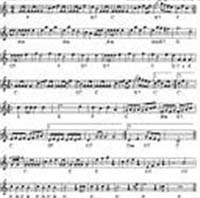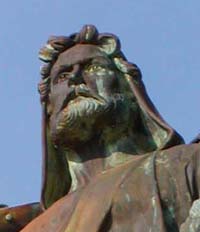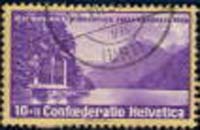Errors
William Tell
Trusting Romantic Legends
Schiller wrote a play on it; Rossini composed an opera about it, the national pride of Switzerland embraced it. Such are the cultural validations with which the story of Wilhelm Tell, the hero of the people and the scourge of their oppressor, presents itself to us. It is not enough. The story of Wilhelm Tell was crafted to be dramatic, it was custom made for the operatic stage, and as far as national pride is concerned, it was designed, and honed into shape over the course of centuries, precisely to be a repository of national pride. Every historian used to know this, by reading it in some such routine place as John Martin Vincent's 1911 textbook Historical Research: An Outline of Theory and Practice. Historians of the present do not know it, and they continually fall into the error from which knowledge of it would tend to protect them. To fill the gap, here is the true story as future historians used to read it in the pages of Vincent.
Vincent has just exploded the myth of St Ursula. We join him on page 151:
The same criterion applies to the familiar legend of William Tell. It was formerly believed that the liberation of Switzerland about 1291 was due to a revolt against an oppressive bailiff sent by the house of Austria, and that the tyrant at that particular time was Hermann Gessler. The chief patriotic hero was William Tell, who, because he would not salute the hat of Gessler, which was mounted on a pole, was compelled to shoot an apple from his son's head. He escaped from custody by leaping from a boat upon a rock, and afterward shot Gessler from an ambush on the road. Later he formed with two friends a conspiracy which culminated in the league of the Forest Cantons.
In this case also we find no contemporary notice of these exciting events. In fact, no writer of the whole fourteenth century knows anything of a rising against bailiffs or of any other of these peculiar episodes. No authentic record of any family by the name of Tell has yet been found. Gessler is not mentioned by any, nor is there any evidence to [152] show that Gesslers were in possession of any castle in Switzerland. Schloss Küssnach, his alleged residence, belonged to the Küssnach family till 1350. On the other hand, the apple-shooting episode as well as many of the other details of this story are found in the poetry and legends of other nations. One need not stop here to determine the origin and career of the various Wandersage involved, for the development of them in connection with the Swiss episode is clearly visible.
In the records the tale appears very tardily. Tell's feats are first mentioned in Switzerland in ballads somewhere before 1474, but in these early versions there is no mention of Gessler, and no irritating hat or pole belonging to any bailiff appears. The cruelties of bailiffs are found first in Conrad Justinger's Bernese chronicle, in 1420, but no names or details are given. The combination of the Tell story and the atrocities of bailiffs appears in one connected tale for the first time in the White Book of Sarnen, a chronicle written somewhere between 1467 and 1476. Many writers now followed with other details and more or less confusion of chronology until the gaps were filled up and the modern form given to the story by Aegidus Tschudi in his Chronicon Helveticum. This was compiled in Tschudi's lifetime (1505-1572), but not published until 1734-1736.
It was thought at one time that a confirmation of the story had been found in the records of a church in Uri, but it appeared later that a patriotic pastor by the name of Megnet about 1675 to 1684 [153] had changed all the names of the family of Nell to "Täll." There is, therefore, no record even of persons to whom this myth might attach itself. The popular form of the legend is due to Schiller, while it was embalmed in history in the elegant prose of Johann von Müller, but both draw their materials from Tschudi. A demonstration of the late appearance of the tale and the visible growth of its particulars is sufficient to disprove its connection with Swiss history, but, furthermore, the real documents of the thirteenth century are not only unconscious of the Tell episode, but exhibit the formation of a confederation by a far different process.
And Vincent sums up the moral of all this in a manner minutely applicable to Chinese hero myths:
The stories of St Ursula and William Tell illustrate very clearly the constructive process of tradition-making when the matter appeals to popular sentiment. The expansion was not due to more recently discovered facts, but to the desire for more detail and more explanation. In the one case pious deception came in at intervals to stimulate devotion and served to accelerate the growth of details. In the other, patriotism and admiration of heroism called out deviations from the first anecdote.
Nor does Vincent fail to make our own final point, that myths, once exposed, are not to be discarded, but are themselves, together with the process that created them, of historical interest as myths:
One might say that internal criticism had no part in this investigation, since the external facts about either tradition show no connection with an original episode. On that ground one should throw the whole matter overboard as containing nothing of historical value. That procedure, however, would deprive us of numerous significant conclusions. The fact that this world-legend was curr[154]rent in Switzerland in the fourteenth century is of itself a matter of culture interest. The fact that the tale was believed for nearly four centuries by the Swiss people is of the most profound significance in their history.
As a patriotic influence and an example of heroism and devotion, William Tell was just as powerful as if he had been true. In the eighteenth century a preacher who in an unguarded moment spoke of Tell as a Danish fable was nearly burned at the stake. In the face of a half century of modern criticism, a book was written as late as 1895 to prove the truth of the legend. The future will determine whether Tell is to be as powerful as a parable as he was as a belief. In short, it must be said that even the forgeries, which are so repellent in the annals and documents, must be weighed in order to determine the time and extent of their influence. In many cases they confirmed the rights of property or guided conduct for generations at a time.
That is so well put that we forbear to add our usual concluding comment. Vincent has said it all.
15 June 2004 / Contact The Project / Exit to History Page


